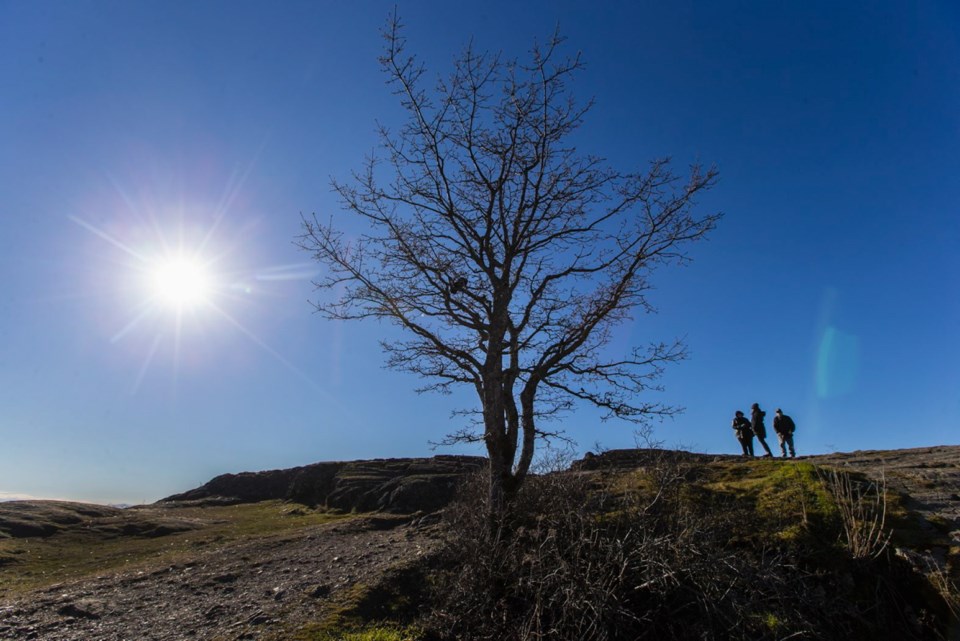For those with long memories, Feb. 1 was actually a decent day with temperatures that hovered near 10 C.
It was pretty much all downhill from there, with snow and persistent cold for much of the rest of February.
“It was a very cold month,” said Environment Canada meteorologist Armel Castellan.
“The temperatures averaged 1.1 C at the airport and 2.2 C at the Fairfield Gonzales station, and those are four degrees colder than normal.”
Each is the second coldest on record for those locations, he said.
The coldest mean temperature recorded in February at Gonzales came 83 years ago in 1936, said Steven Murray, a local weather blogger. The mean for the month was 0.7 C.
“That’s yet another almost two degrees colder than we saw this year, which is astounding to think,” Castellan said.
He said that the number of days reaching below-zero temperatures in February is normally 10, but this year there were 23.
Murray said that in the past 50 years there have been only two other months at Gonzales colder than February 2019: November 1985, at 1.9 C, and January 1972, at 2.1 C.
“What is most notable about the cold weather [in February] is how the temperatures have stayed consistently below normal,” he said.
“I guess we can take some solace in the fact that these unusually cold temperatures have been experienced through much of western North America.”
Calgary had its coldest February since 1936 and Los Angeles its coldest since 1962, he said.
Almost all of February’s precipitation in the capital region fell as snow, Castellan said.
“We had our 68.3 centimetres of snow and only 14.7 millimetres of rain” at Victoria International Airport, he said.
Along the way, there were three consecutive “snow days” in local school districts, and numerous cancelled meetings and events.
The lingering cold and snow cover have affected local farmers, including daffodil-grower Ryan Vantreight of Longview Farms, whose flowers still have frozen stems.
February was also a busy time for the Greater Victoria Extreme Weather Protocol, which expands the number of shelter beds for those in need during significant weather conditions. Regional co-ordinator Jen Wilde said the program has been activated all but three days since Feb. 3.
Castellan said that overnight low temperatures averaged -2.3 C in February, while the normal average is 1.3 C. “We’re talking about 3.6, 3.7 degrees colder than normal there.”
Greater Victoria residents can count on there being no more snow in the short term, with plenty of sun expected in the coming week. “We’re certainly going to be so dry we won’t even see rain, let alone snow,” he said.
The temperature could finally reach a normal high by Wednesday, getting to 9 C.



